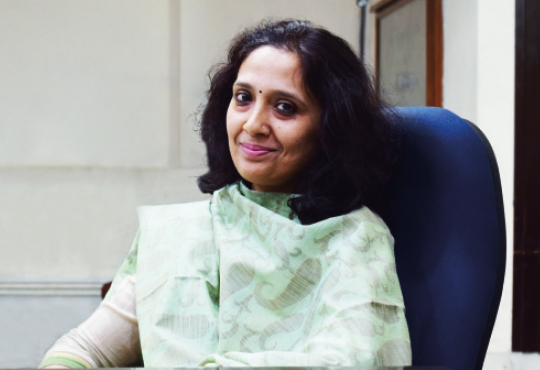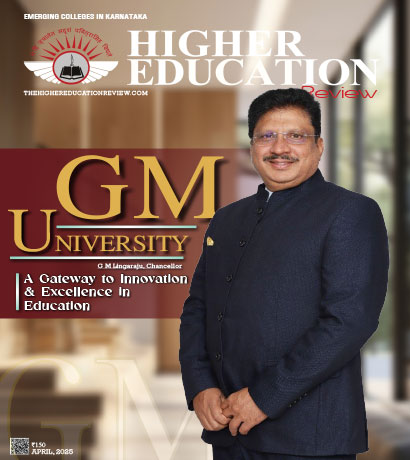The Internationalization of Higher Education: Overcoming Challenges through Innovation and Experiential Learning Advertising

Koushiki Mukherjee, International Relations Executive, IIT Kharagpur
Incepted in the year 1956, IIT Kharagpur is an autonomous University. From this modest start in 1950, IIT Kharagpur has been engaged in a steady process of development with about 27 academic departments and schools, 7 centres of excellence. The vast tree-laden campus, spreading over 2100 acres has a self contained township of over 15,000 inhabitants.
As evident from the Post-Cold War history, Gorbachev's reform movements of Glasnost and Perestroika were slow to bear fruit and had substantially hastened the downfall of USSR in the period leading to 1991. The ideas of 'political reform' and 'openness' had unwittingly ushered the way for the two key themes of the twenty-first century. 'Globalization' and 'Internationalization' would before long rule the dynamics of the world economy and would begin to challenge the predominance of nation states in every facet of our sovereign existence.
"Adequate care must be taken to overcome the challenges of building an educational brand that includes addressing the limitations of collegiate ranking methodologies"
'Globalization' and 'Internationalization' may be related but they carry distinct connotations, especially in context of higher education. While 'Globalization' pertains to the policy implications arising out of economic necessities, 'Internationalization' includes the ideas, policies and practices undertaken by academic institutions to adjust to the emerging academic trends.
Internationalization of higher education has existed for a significant amount of time in countries spanning the two hemispheres. Even though the affluent northern countries have resources to device complex internationalization strategies and can provide the most services to international stakeholders, their less endowed southern neighbors are also not too far behind in attracting international business. Several developing countries in South Asia, Asia-Pacific, and Africa as well as in the Middle Eastern regions have emerged into pockets of significant international activity in the last decade. India, for example has traditionally been seen as a country that sends rather than receives international students, but a growing number of students from elsewhere are now choosing to study in India. Indeed, recent studies made by the Institute of International Education have found that India is the 11th most popular country for US students abroad. India's Higher Education Institutions are also seen to attract a large number of students coming in from Bangladesh, Nepal, Bhutan, Iran, Afghanistan, African countries such as Sudan, Nigeria, Cameroon, Ghana and South-East Asian countries such as Malaysia.
As explained in the article by Hannover Research 2014, one of the most widely practiced trends includes hiring marketing professionals from corporate to create strong institutional brands, an intuitive website to create an 'ultimate brand statement', as well as recruitment in the digital space. Education in the post-globalized world has to factor in the 'experience' as well as the 'employability' aspect. This maximizes outreach by using technology to the optimal level. While this trend is being increasingly practiced by certain fraternities of institutions in India, yet there are several others that continue to operate within the 'traditional' paradigm concomitant with a semi-liberal society. For such institutions, the central philosophy continues to be to educate the Indian community and to obtain students and staff primarily on its existing reputation index rather than look outward and device strategies of internationalization.
Altbach and Knight mention in their article that institutions of higher education in the developed countries have a better capacity to meet the growing demands of internationalization. Such initiatives may include the flow of international students, franchisers of academic programs to foreign providers, international accreditors or quality guarantors, or controlling partners in 'twinning' agreements.
As Schofer and Meyer observed in their seminal work on the worldwide expansion of Higher Education in the Twentieth Century, the higher education sector has been seen to rise exponentially where the state control over education is low. It is also thriving in countries that are linked more to world society characterized by scientization, democratization, expansion of human rights and the rise of development planning. The authors cogently argue that the time has come where institutions of higher education need to move away from the orthodox system which is characterized by fear associated with extreme specialization or over-education. This system, as is still prevalent in certain educational communities in India needs to be replaced by a system where advanced education may be pictured as, 'human capital for unlimited progress.'
In conclusion, changes in world polity and increased competition have drastically changed how institutes of higher education operate. Since education is a service, it is both experiential and intangible in nature. HEIs in countries in the low developing southern hemisphere, therefore, need to reinvent themselves to accommodate the twin aspects of academic quality and intuitive branding to attract the right talents both in terms of faculty as well as the student population. Without adequate acknowledgment and inculcation of the emerging trends in the modern post-liberalized economy, it will become difficult for governments to arrest and reverse brain-drain. Adequate care must be taken to overcome the challenges to building an educational brand that includes addressing the limitations of collegiate ranking methodologies, establishing oneself as steering partner in dual agreements and becoming an active partner in consortiums and regional educational associations. Focusing on these parameters will enable better brand recall and subsequently facilitate talent acquisition which ultimately will lead to enhancement both in terms of quality as well as visibility to the greater international audience.
As evident from the Post-Cold War history, Gorbachev's reform movements of Glasnost and Perestroika were slow to bear fruit and had substantially hastened the downfall of USSR in the period leading to 1991. The ideas of 'political reform' and 'openness' had unwittingly ushered the way for the two key themes of the twenty-first century. 'Globalization' and 'Internationalization' would before long rule the dynamics of the world economy and would begin to challenge the predominance of nation states in every facet of our sovereign existence.
"Adequate care must be taken to overcome the challenges of building an educational brand that includes addressing the limitations of collegiate ranking methodologies"
'Globalization' and 'Internationalization' may be related but they carry distinct connotations, especially in context of higher education. While 'Globalization' pertains to the policy implications arising out of economic necessities, 'Internationalization' includes the ideas, policies and practices undertaken by academic institutions to adjust to the emerging academic trends.
Internationalization of higher education has existed for a significant amount of time in countries spanning the two hemispheres. Even though the affluent northern countries have resources to device complex internationalization strategies and can provide the most services to international stakeholders, their less endowed southern neighbors are also not too far behind in attracting international business. Several developing countries in South Asia, Asia-Pacific, and Africa as well as in the Middle Eastern regions have emerged into pockets of significant international activity in the last decade. India, for example has traditionally been seen as a country that sends rather than receives international students, but a growing number of students from elsewhere are now choosing to study in India. Indeed, recent studies made by the Institute of International Education have found that India is the 11th most popular country for US students abroad. India's Higher Education Institutions are also seen to attract a large number of students coming in from Bangladesh, Nepal, Bhutan, Iran, Afghanistan, African countries such as Sudan, Nigeria, Cameroon, Ghana and South-East Asian countries such as Malaysia.
As explained in the article by Hannover Research 2014, one of the most widely practiced trends includes hiring marketing professionals from corporate to create strong institutional brands, an intuitive website to create an 'ultimate brand statement', as well as recruitment in the digital space. Education in the post-globalized world has to factor in the 'experience' as well as the 'employability' aspect. This maximizes outreach by using technology to the optimal level. While this trend is being increasingly practiced by certain fraternities of institutions in India, yet there are several others that continue to operate within the 'traditional' paradigm concomitant with a semi-liberal society. For such institutions, the central philosophy continues to be to educate the Indian community and to obtain students and staff primarily on its existing reputation index rather than look outward and device strategies of internationalization.
Altbach and Knight mention in their article that institutions of higher education in the developed countries have a better capacity to meet the growing demands of internationalization. Such initiatives may include the flow of international students, franchisers of academic programs to foreign providers, international accreditors or quality guarantors, or controlling partners in 'twinning' agreements.
As Schofer and Meyer observed in their seminal work on the worldwide expansion of Higher Education in the Twentieth Century, the higher education sector has been seen to rise exponentially where the state control over education is low. It is also thriving in countries that are linked more to world society characterized by scientization, democratization, expansion of human rights and the rise of development planning. The authors cogently argue that the time has come where institutions of higher education need to move away from the orthodox system which is characterized by fear associated with extreme specialization or over-education. This system, as is still prevalent in certain educational communities in India needs to be replaced by a system where advanced education may be pictured as, 'human capital for unlimited progress.'
In conclusion, changes in world polity and increased competition have drastically changed how institutes of higher education operate. Since education is a service, it is both experiential and intangible in nature. HEIs in countries in the low developing southern hemisphere, therefore, need to reinvent themselves to accommodate the twin aspects of academic quality and intuitive branding to attract the right talents both in terms of faculty as well as the student population. Without adequate acknowledgment and inculcation of the emerging trends in the modern post-liberalized economy, it will become difficult for governments to arrest and reverse brain-drain. Adequate care must be taken to overcome the challenges to building an educational brand that includes addressing the limitations of collegiate ranking methodologies, establishing oneself as steering partner in dual agreements and becoming an active partner in consortiums and regional educational associations. Focusing on these parameters will enable better brand recall and subsequently facilitate talent acquisition which ultimately will lead to enhancement both in terms of quality as well as visibility to the greater international audience.

